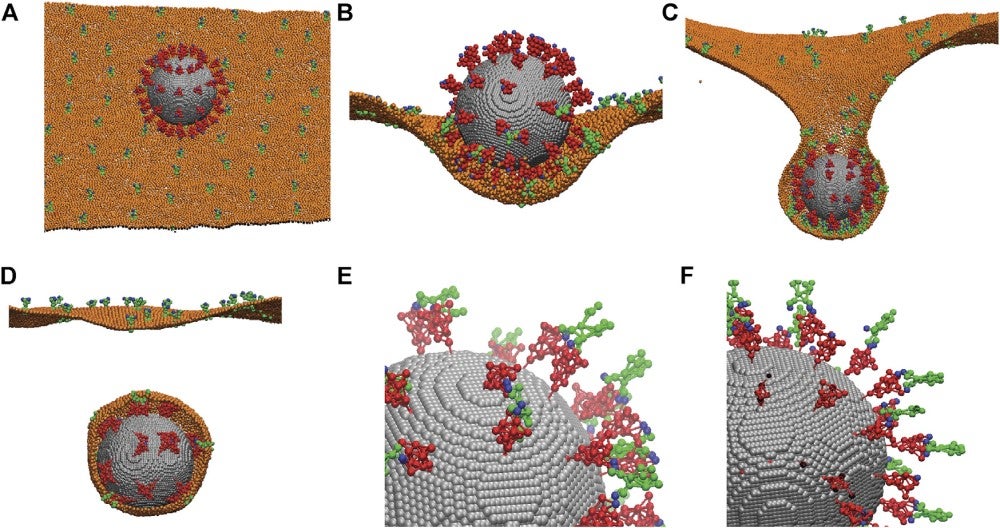Bioengineers design coronavirus model
Text block one

Among the researchers racing to better understand the virus behind the COVID-19 pandemic are UIC bioengineering students and faculty.
Guided by Assistant Professor Zhangli Peng, undergraduate students Timothy Leong and Chandhana Voleti created “coarse-grained” models of two important types of proteins: the spike proteins that characterize the exterior of the SARS-CoV-2 virus and ACE2 receptor proteins in human cells, which provide a point for coronavirus spikes to attach. Coarse-grained models, simplified representations of systems that shed light on how molecules behave and interact, can help researchers to study complex processes: in this case, how the coronavirus is brought inside cells.
Leong said the team’s model helped confirm the scientific community’s assessment that the binding of the spike protein to the ACE2 receptor plays a critical role when the virus first breaks into human cells. He added they also found the spike protein is flexible and able to bend in a way that optimizes its chances at breaking through the ACE2 receptor, like a thief using a hairpin to open a lock.
The team used molecular dynamics software packages called NAMD and VMD to simulate the physical movements of the atoms and molecules that make up both the ACE2 receptor and the SARS-CoV-2 virus based on real-world data. Peng was then able to model the endocytosis process, which is how substances such as the virus are brought inside cells.
Peng noted that it was challenging to simulate this process because it involves millions of atoms, but the team addressed this issue by using the supercomputer Theta at Argonne National Laboratory.
While work remains on the models for the proteins, virus, and cell membrane, the research offers a starting point to determine which part of the spike protein and which part of the ACE2 receptor bind to each other. Identifying these parts could help scientists to develop antiviral treatments that would stop the spike from breaking into human cells in the first place.
The team published its findings in Frontiers in Physics in a paper titled “Course-Grained Modeling of Coronavirus Spike Proteins and ACE2 Receptors.” The research was supported by the Guaranteed Paid Internship Program (GPIP) and funding from the National Science Foundation’s Research Experiences for Undergraduates program.